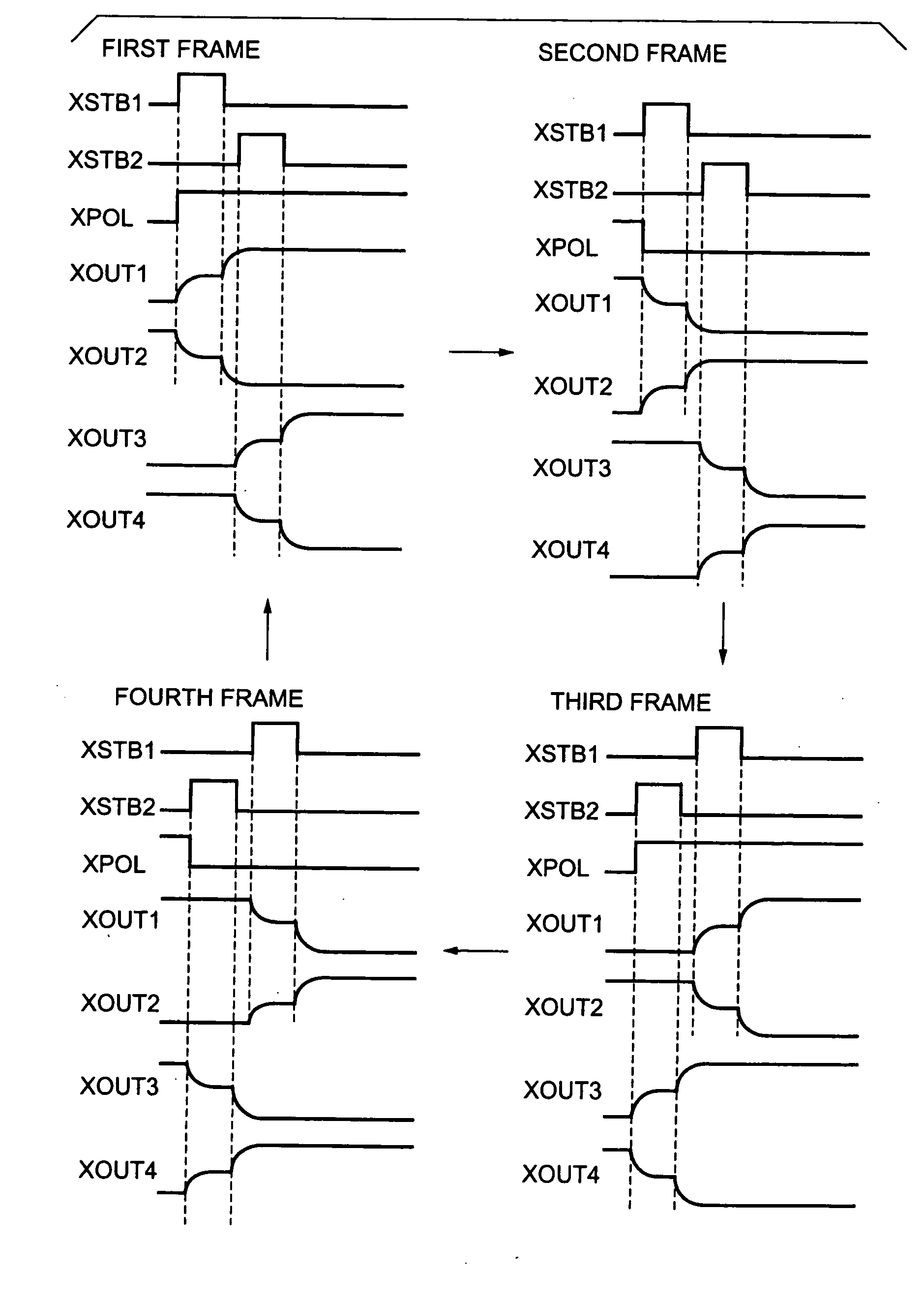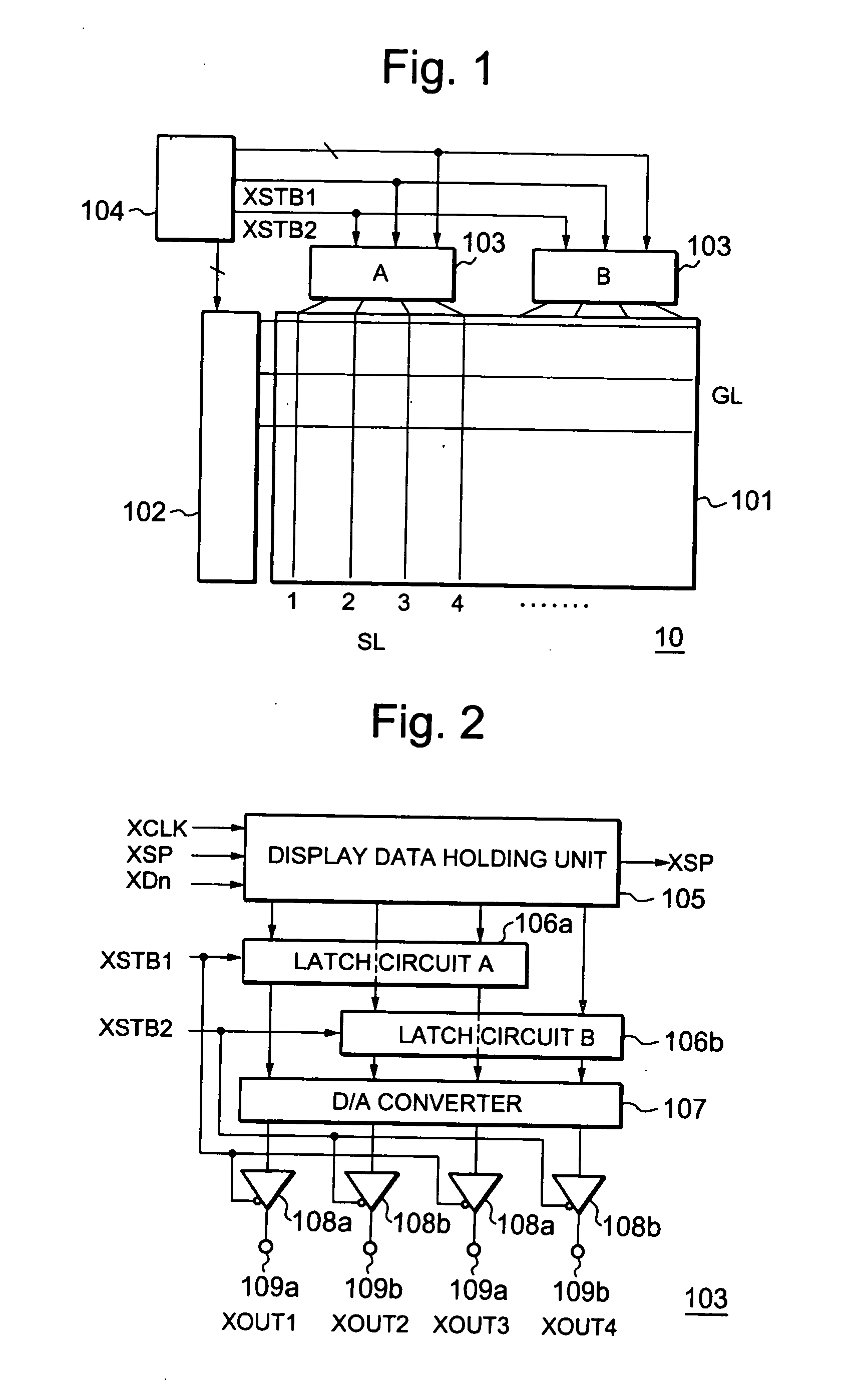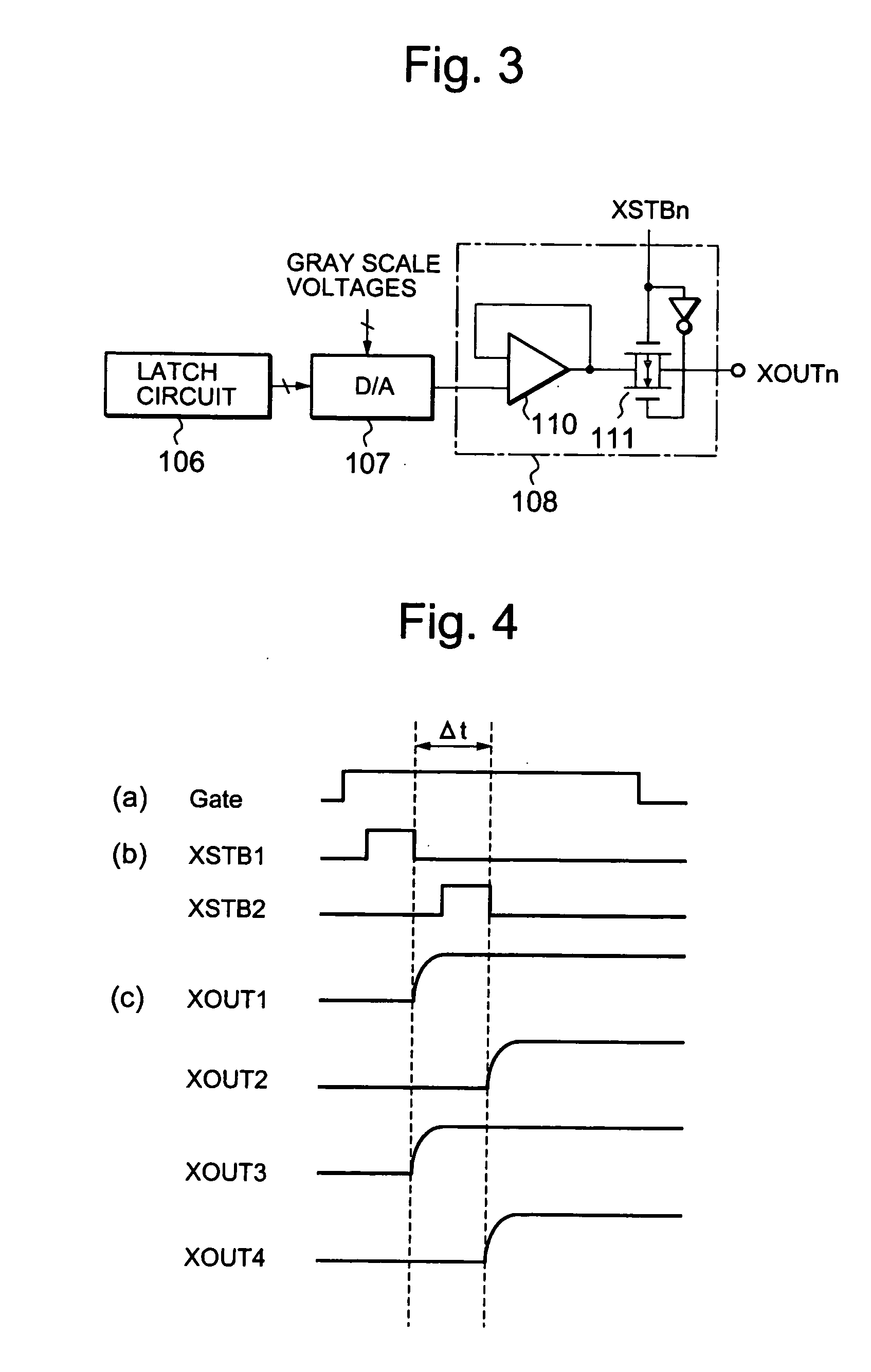Drive circuit chip and display device
a technology of drive circuit and display device, which is applied in the direction of digital output to print units, instruments, computing, etc., can solve the problems of large electromagnetic interference (emi) noise in the source driver, and achieve the effects of reducing the number of signals simultaneously outputted, reducing peak current, and reducing emi nois
- Summary
- Abstract
- Description
- Claims
- Application Information
AI Technical Summary
Benefits of technology
Problems solved by technology
Method used
Image
Examples
first embodiment
[0029] Descriptions will be provided for a display device according to a first embodiment of the present invention with reference to FIG. 1. Here, an active matrix liquid crystal display device of transmissive type will be described as an example of the display device. FIG. 1 is a schematic diagram of a liquid crystal display device 100 according to this embodiment. The liquid crystal display device 100 includes a liquid crystal display panel 101 for displaying images; a scan line driver (hereinafter referred to as a “gate driver”) 102 for driving scan lines (hereinafter referred to as “gate lines GL”); data line drivers 103 each for driving data lines (hereinafter referred to as “source lines SL”). This figure shows an example where two source drivers 103 are arranged. A source driver A 103a and a source driver B 103b are shown in FIG. 1. Each of the source drivers 103 is fabricated as a semiconductor chip. In addition, the liquid crystal display device 100 includes a controller 10...
second embodiment
[0057] The first embodiment has been described giving the example where display data are in the form of digital signals. However, display data may be in the form of analogue signals. In other words, display data in the form of analogue signals may be expanded and held in a sample hold circuit configured of a plurality of switches and a plurality of condensers.
[0058]FIG. 6 is a circuit diagram showing a source driver 103 according to the second embodiment. As shown in FIG. 6, the source driver 103 according to the second embodiment includes a display data holding unit 105, a first sample hold circuit A 112a, a second sample hold circuit B 112b, a D / A converter 107 and output buffers 111. What makes this embodiment different from the first embodiment is that the first latch circuit A 106a shown in FIG. 2 is replaced with the first sample hold circuit A 112a, and the second latch circuit B 106b shown in FIG. 2 is replaced with the second sample hold circuit B 112b.
[0059] The input of...
third embodiment
[0067] In the cases of the first embodiment and the second embodiment, the timing of the image-output control signal 1 (XSTB1) and the timing of the image-output control signal 2 (XSTB2) are different from each other by Δt. Time spent to write the image signal into the pixel electrodes connected to the odd-numbered source lines is longer by Δt than into the pixel electrodes connected to the even-numbered source lines. If it could take a sufficient time to write the image signal into the pixel electrodes, there would be no influence on the image quality. If the display panel is made larger and more precise, not only the load capacity becomes larger, but also one horizontal period becomes shorter.
[0068] For this reason, with regard to the odd-numbered source lines and the even-numbered source lines in the liquid crystal display panel 101, columns of pixel electrodes into which the image signal is insufficiently written alternate with columns of pixel electrodes into which the image s...
PUM
 Login to View More
Login to View More Abstract
Description
Claims
Application Information
 Login to View More
Login to View More - R&D Engineer
- R&D Manager
- IP Professional
- Industry Leading Data Capabilities
- Powerful AI technology
- Patent DNA Extraction
Browse by: Latest US Patents, China's latest patents, Technical Efficacy Thesaurus, Application Domain, Technology Topic, Popular Technical Reports.
© 2024 PatSnap. All rights reserved.Legal|Privacy policy|Modern Slavery Act Transparency Statement|Sitemap|About US| Contact US: help@patsnap.com










